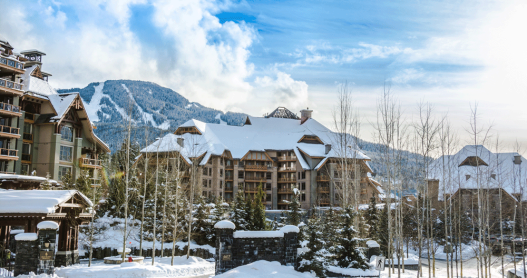Overview
When’s the best time to go to Atlantic Canada?
The best time to visit Atlantic Canada depends on what you want to see or do, but be prepared for all weather conditions no matter the season. Spring can be rainy and cool, and while summer is mostly warm and pleasant, it can sometimes go from clear and sunny to rainstorms in minutes. September and October bring cooler temperatures, fewer crowds, and fall colors, but winter requires some grit—if you’re planning on driving, be prepared with good snow tires, antifreeze windshield washer, and a healthy dose of caution: Snow and ice storms can blow through suddenly. Also note that, while Atlantic Canada has a temperate climate similar to that of New England, temperatures in Newfoundland and Labrador are typically cooler and can approach freezing by late summer.
How to get around Atlantic Canada
Transportation to and within Atlantic Canada isn’t as developed as it is throughout the rest of the country, but there are still several options for getting around. Each province has its own commercial airport, though most visitors fly into Halifax—the region’s main international hub, regularly serviced by Air Canada, United, and discount airlines like Swoop (and seasonally by American Airlines, Delta, and Flair Air). Travelers can also arrive by train; both VIA Rail Canada and Amtrak run through Halifax station.
Once in the region, you’ll most likely need a rental car. Municipal buses only service cities like Fredericton, Saint John (New Brunswick), Moncton, Halifax, Sydney, and St. John’s (Newfoundland), and cycling is more of a recreational activity. Thankfully, well-marked roads make it easy to drive between provinces. For most places, the fastest route will be via the 100-series highways, but if you’re not in a hurry, opt for a slower, more scenic drive along older routes like 1, 2, and 3, which pass through several communities. When traveling between Prince Edward Island and New Brunswick, you’ll cross the Confederation Bridge—the world’s longest, connecting P.E.I.’s Highway 1 to the Trans-Canada highway—over the Northumberland Strait. (Note: There’s a toll charge for vehicles leaving P.E.I.)
Those inclined to travel by water can rely on ferry service. Northumberland Ferries runs from Wood Islands, P.E.I., to Pictou, Nova Scotia, as well as from Saint John, New Brunswick, to Digby, Nova Scotia; Marine Atlantic Ferries goes from Newfoundland to North Sydney, Nova Scotia; and Bay Ferries shuttles passengers from Bar Harbor, Maine, to Yarmouth, Nova Scotia.
Can’t miss things to do in Atlantic Canada
- Newfoundland is home to some impressive icebergs. Head to the shoreline along southeastern Newfoundland or the Labrador coast between late May and early June to watch the 10,000-year-old glacial giants float through Iceberg Alley, or hop aboard a boat tour to see them up close.
- Fans of Lucy Maud Montgomery’s Anne of Green Gables series of novels will want to make a pilgrimage to the Prince Edward Island farmhouse that inspired the fictional home of literature’s most famous redhead. Only open from mid-May through late October, Green Gables Heritage Place boasts a visitor center, heritage experiences with “Anne,” and walking trails like Lover’s Lane and Haunted Woods, just like in the books.
- A trip to Nova Scotia must include a visit to the Bay of Fundy, home to the highest tides in the world. The bay empties and refills twice a day, so visitors can walk the ocean floor at low tide, then return mere hours later to kayak around Hopewell Rocks. You can also go birdwatching for semipalmated sandpipers at Mary’s Point, rappel 142 feet down Cape Enrage over powerful currents, hike through Acadian forest in Fundy National Park, or hop on a ferry to Grand Manan Island and spot whales along the way.
- Outdoors adventurers shouldn’t miss Stonehammer in New Brunswick, North America’s first UNESCO Global Geopark. The area encompasses more than 60 significant geological and fossil sites dating from the late Precambrian period to the Ice Age. Shaped by oceans, colliding continents, volcanoes, earthquakes, and climate change, it’s also ripe for exploration, offering everything from hiking and rock climbing to kayaking and zip-lining over old-growth forests and rapids. Bike the winding trails of Saint John’s Rockwood Park, climb a 452-year-old volcanic rock wall, take a pontoon boat out on the Kennebecasis River, or walk on a fault line, all while appreciating the magnificent nature around you.
Food and drink to try in Atlantic Canada
Atlantic Canada is famous for its seafood, so travelers would be remiss not to try Prince Edward Island oysters, Nova Scotia’s Digby scallops, or cod from Newfoundland and Labrador. Additionally, no trip here is complete without a lobster feast, whether in a roll, over poutine, or simply boiled in fresh seawater on the beach and served whole with drawn butter.
The region’s local cuisine is distinctive and worth sampling. Much of the population in the Maritime provinces is descended from French settlers, a fact that’s reflected in dishes like rappie pie (with meat and grated potatoes), Acadian tourtiere (a meat pie with onion and summer savory), fricot (stew with dumplings), and poutine râpée (potato dumplings). Haligonians also swear by the Halifax donair (similar to a gyro, but with a garlicky sauce made from condensed milk); Islanders stand behind Cows Creamery and its old-fashioned ice cream in flavors like chunky chocolate mint and maple-walnut; and New Brunswick natives are crazy about wild blueberries. (Canada is the world’s largest producer and exporter of blueberries, most of which come from New Brunswick.)
In Newfoundland and Labrador, look for the pancake-like toutons and brewis (salt cod and hard bread) with scrunchions (fried salt pork backfat), as well as the curiously named Jiggs dinner, which consists of boiled salt beef, potatoes, carrots, cabbage, and turnips and is often served with blueberry duff (a sweet and savory steamed pudding). The province is also the only one in the country permitted to serve wild game in its restaurants, so don’t be surprised if you see moose—an overpopulated species—on a menu.
When it comes to drinks, beer is king. Try Alexander Keith’s IPA or Garrison Brewing’s Tall Ship Amber Ale in Nova Scotia, Moosehead Lager in New Brunswick, and Quidi Vidi Brewing Co.’s Iceberg Beer in Newfoundland.
Culture in Atlantic Canada
Steeped in nautical heritage, Atlantic Canada features plenty of community museums and archives dedicated to the region’s seafaring ways. Visit the Maritime Museum of the Atlantic in Halifax for an immersion in the World Wars, the Titanic, and the Halifax Explosion. Those more interested in art should head to the Art Gallery of Nova Scotia (which includes the restored home of prolific folk artist Maud Lewis), while music fans should plan their trip around events like the Cavendish Beach Music Festival in July or the Celtic Colours International Festival in October.
Seven of Canada’s 20 UNESCO World Heritage sites are in Atlantic Canada. Nova Scotia is home to a rainbow of historic homes in the fishing port of Lunenburg and 500-million-year-old fossils in Mistaken Point Ecological Reserve, while Newfoundland boasts the Grand-Pré (a significant memorial to the Acadian people) and Gros Morne National Park (carved by glaciers and featuring deep fjords, alpine ridges, coastal waterfalls, highland tundra, and ocean inlets).
Local travel tips for Atlantic Canada
- Newfoundlanders speak with an English dialect that includes words and phrases not spoken outside the region. Don’t be surprised if you’re invited over for some screech and boughten bread (store-bought bread) because you’re a CFA (come from away, or someone from outside the community).
- Moose are a common hazard on roads, so drive with caution.
- All the Atlantic provinces apply a 15 percent sales tax on most goods and services.

![[Newfoundland, Canada - Aug 2020] 'The Battery' a neighbourhood in St. John's, Newfoundland, Canada, seen from across St. John's Harbour in the summer.](https://afar.brightspotcdn.com/dims4/default/2b4c39b/2147483647/strip/true/crop/3000x1592+0+217/resize/1440x764!/quality/90/?url=https%3A%2F%2Fk3-prod-afar-media.s3.us-west-2.amazonaws.com%2Fbrightspot%2Fef%2Fec%2Fe0b20cd3421da2cad29cf8ae7e55%2Ftravelguides-atlanticcanada-eyestravelling-shutterstock.jpg)






















